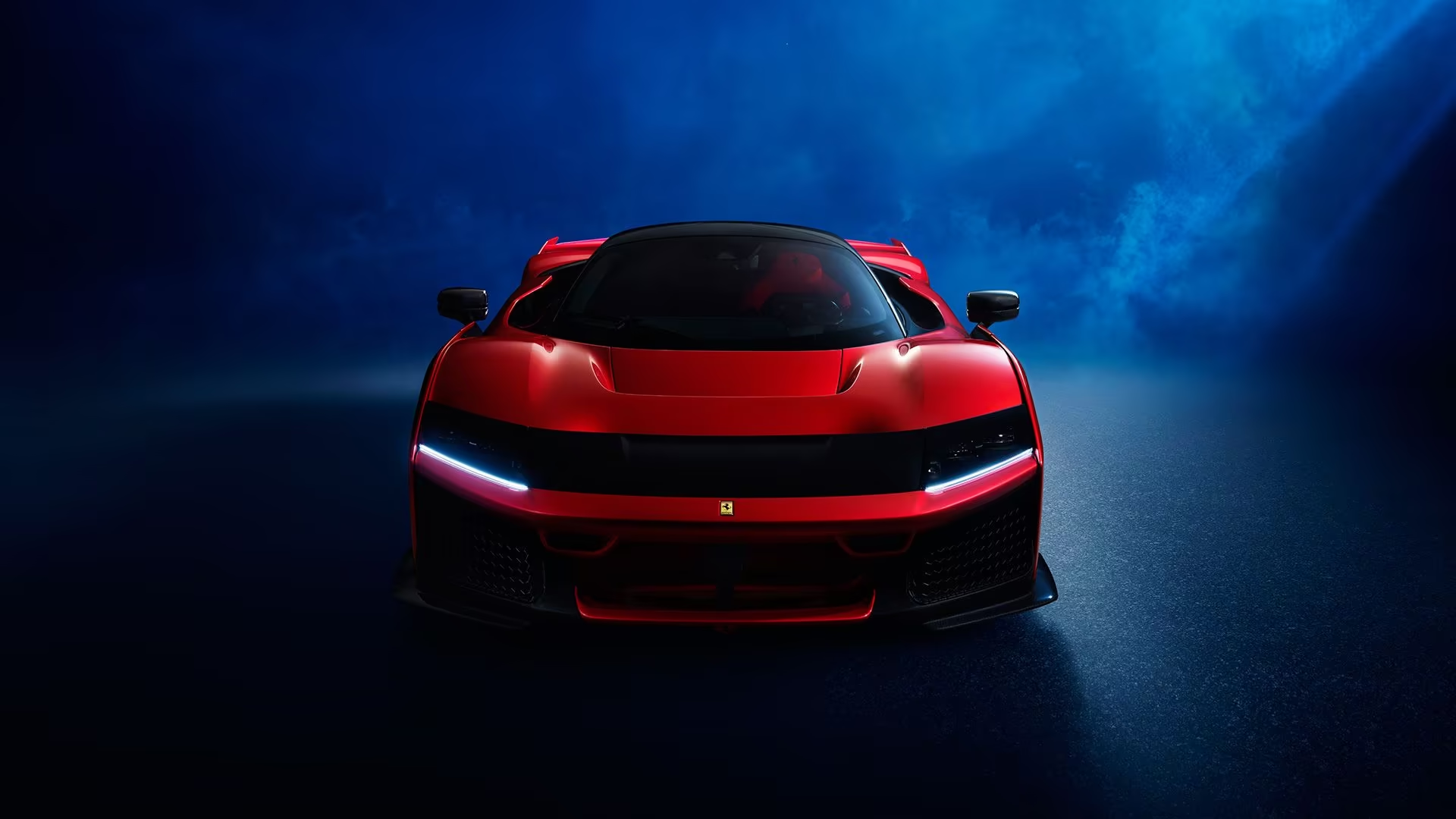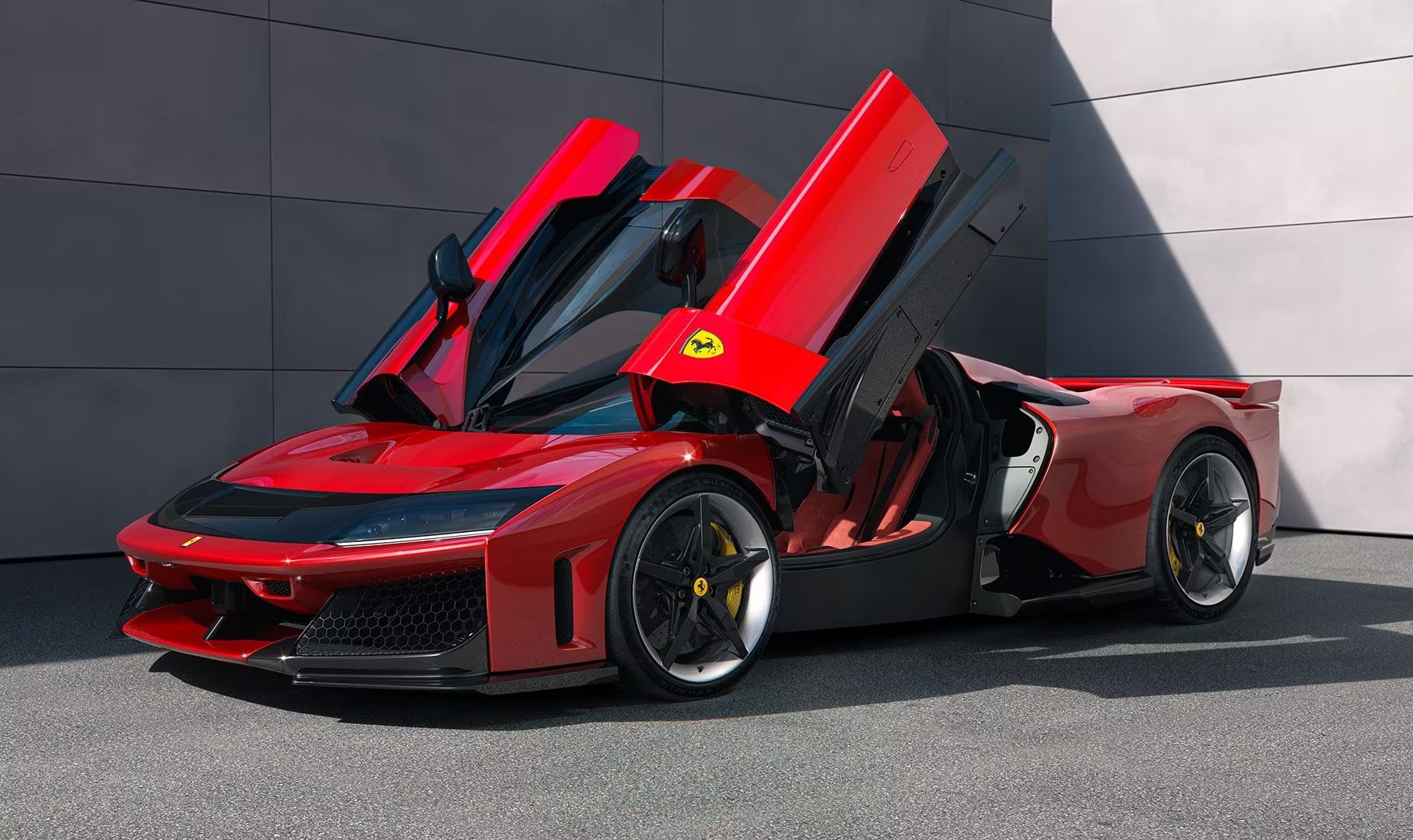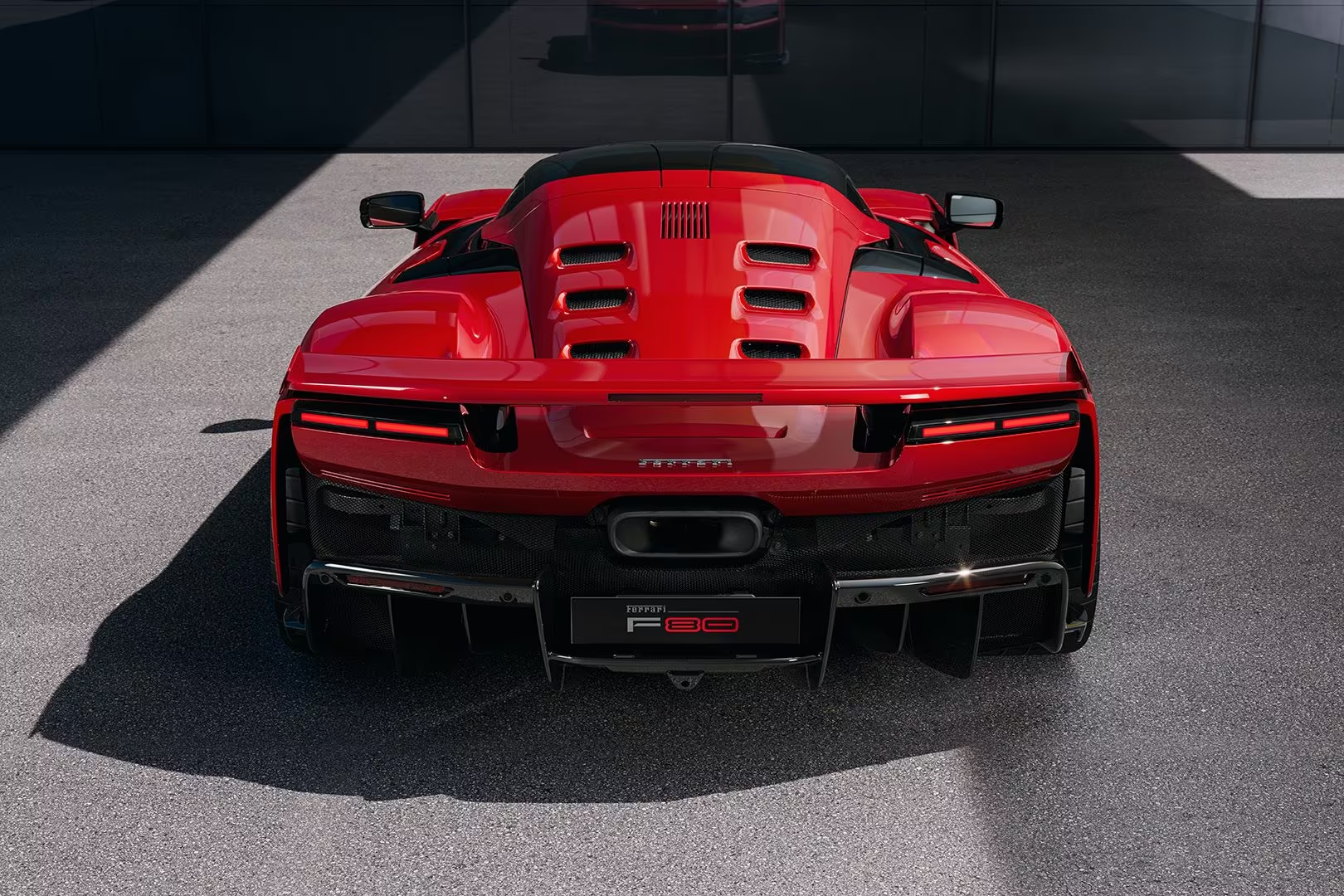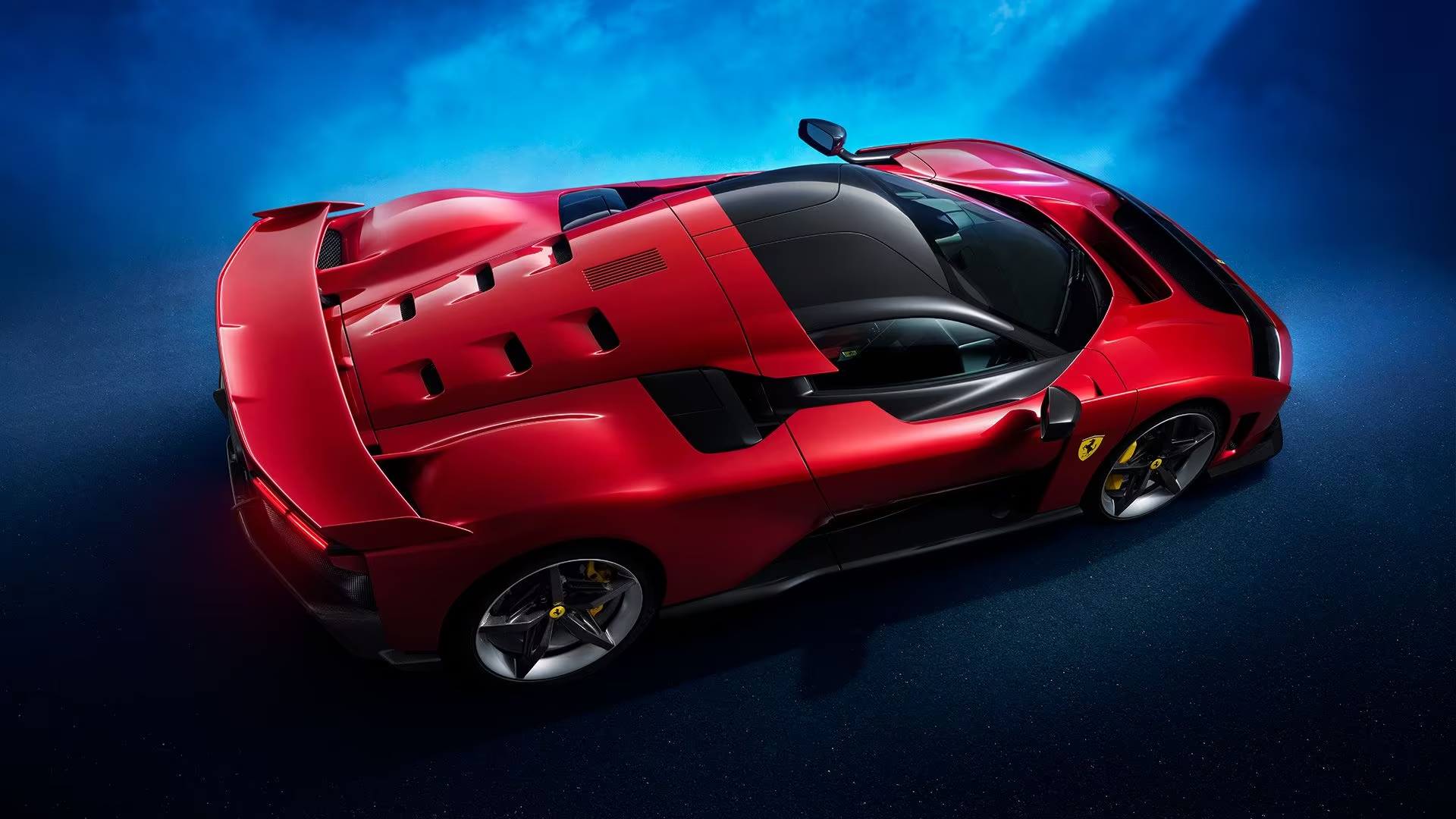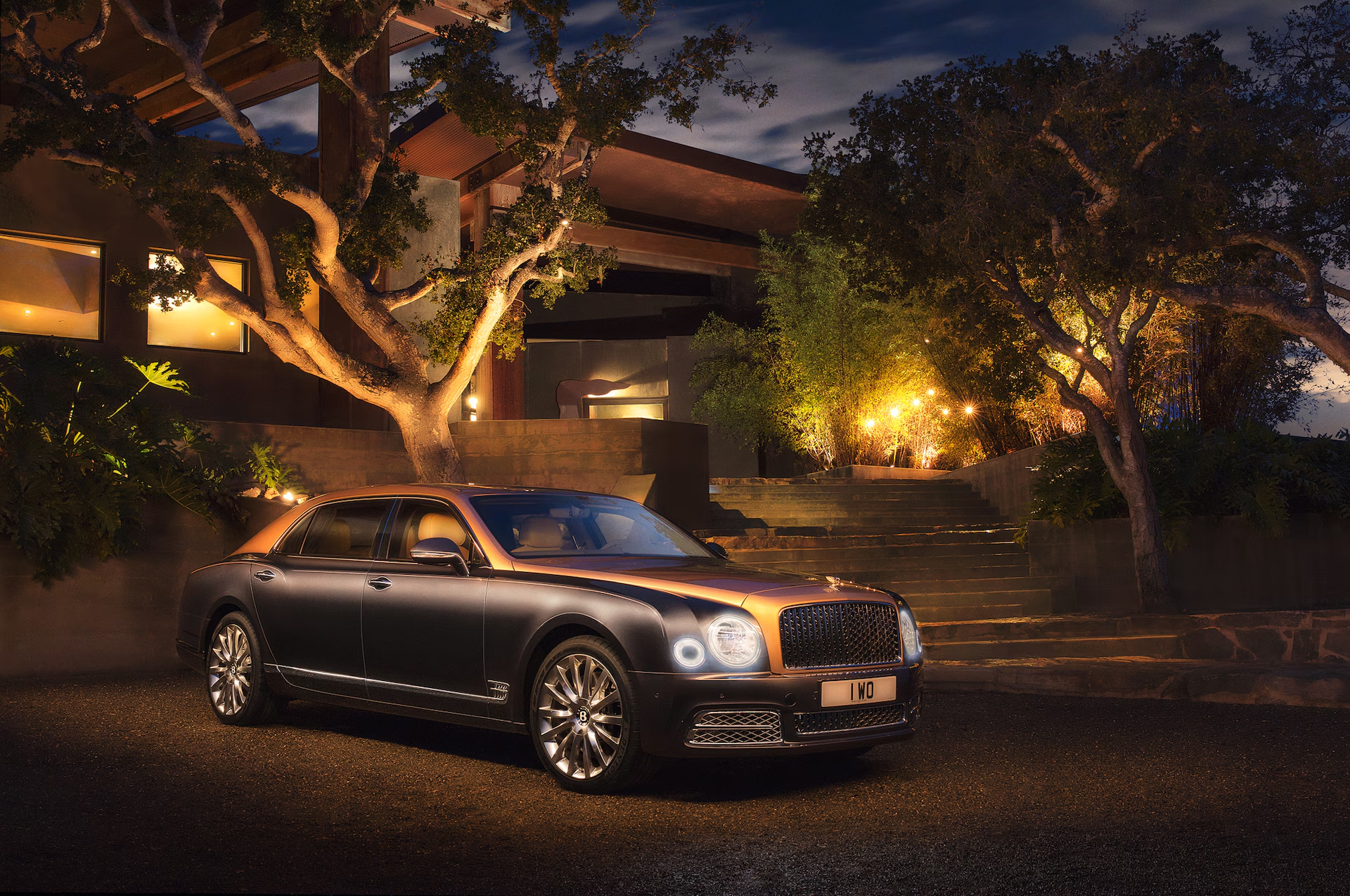Ferrari has always been at the forefront of innovation, blending cutting-edge technology with exhilarating performance. The Ferrari F80, a concept designed by Adriano Raeli, pushes these boundaries even further. It represents what the next-generation hypercar could look like—lightweight, aerodynamically optimized, and powered by a hybrid twin-turbo V8 engine. But does the F80 concept truly reflect Ferrari’s future? Let’s explore its design, performance, and potential impact on the automotive industry.
The design: futuristic aerodynamics
Ferrari’s design philosophy has always emphasized both beauty and functionality. The F80 concept takes this approach to an extreme. The car features an ultra-low, aggressive stance with aerodynamics inspired by Formula 1. Every curve and vent is meticulously crafted to maximize downforce and reduce drag.
One of the most striking aspects of the design is its fighter jet-like cockpit. Instead of a conventional windshield, the F80 incorporates a wraparound glass canopy. This gives the driver an unparalleled sense of immersion, making the driving experience feel more like piloting a high-speed aircraft than handling a traditional supercar.
Ferrari’s experience in aerodynamics is evident in the active aero elements. Adjustable flaps, air channels, and a seamless integration of downforce-generating features allow for superior stability at high speeds. These innovations would make the F80 one of the most aerodynamically advanced hypercars ever created.
Performance: twin-turbo hybrid V8
Traditionally, Ferrari’s hypercars have been powered by naturally aspirated V12 engines. However, the F80 concept proposes a shift towards a twin-turbo V8 hybrid system. This setup aligns with the industry’s growing focus on efficiency and sustainability without sacrificing power.
The estimated output of the F80 concept is a staggering 1,200 horsepower. This immense power comes from a combination of an 860-horsepower internal combustion engine and a 300-horsepower KERS (Kinetic Energy Recovery System) electric motor. The result? A hypercar capable of accelerating from 0 to 100 km/h (0–62 mph) in just 2.2 seconds, with a projected top speed of 500 km/h (310 mph).
While these numbers are impressive, real-world feasibility remains a question. Achieving such performance requires advancements in battery technology, aerodynamics, and material engineering. If Ferrari brings a model like this to production, it would likely undergo modifications to meet safety and road regulations.
Innovation and technology
The F80 concept embraces lightweight materials such as carbon fiber and advanced composites. These materials help reduce overall weight while maintaining structural integrity. Additionally, the hybrid powertrain suggests Ferrari’s commitment to integrating sustainable technology into its high-performance vehicles.
One of the most exciting aspects of the F80 is its potential driving experience. With an advanced hybrid system, instant torque delivery would provide mind-blowing acceleration. The concept also hints at semi-autonomous driving features, which could assist the driver without compromising the thrill of driving.
Potential impact on Ferrari’s lineup
Could Ferrari produce a hypercar based on the F80 concept? While the exact specifications might not become reality, the design language and hybrid approach could influence future Ferrari models.
Ferrari has already demonstrated its interest in hybrid technology with the LaFerrari and SF90 Stradale. The F80 could serve as an inspiration for upcoming models, pushing performance and efficiency to new levels. If Ferrari decides to introduce a next-generation hypercar, we might see elements of the F80 concept integrated into its final design.
My expert take on the F80 concept
As an automotive enthusiast, I find the F80 concept both thrilling and ambitious. It showcases Ferrari’s relentless pursuit of innovation while adapting to changing industry trends. However, some aspects, such as the extreme speed claims, may be more of a designer’s dream than a practical engineering reality.
That said, Ferrari has surprised us before. If they find a way to balance the raw power of a twin-turbo V8 with the efficiency of hybrid technology, the result could be a groundbreaking hypercar. For now, the F80 remains a fascinating vision of what Ferrari’s future could look like.
What do you think?
Would you like to see Ferrari produce a hypercar based on the F80 concept? Do you believe hybrid technology is the right direction for Ferrari’s future? Share your thoughts in the comments below
all images thanks to ferrari.com
